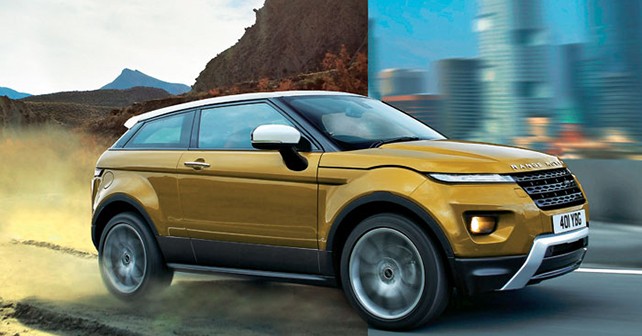
From the tough character of their specialized vehicles to the glamour of their chic and more modern ones – of which the Evoque is the protagonist – we explore how the British marque is evolving.
Once upon a time, there was the Defender (actually, at first, it was called just the Series I, II, III, and later 90 and 110) with its whole choreography of dust, mud and sweat that is the essence of a true off-road vehicle. There was also the Range Rover, with its English country gentleman elegance, which was responsible for enrapturing countless of (wealthy) fans well beyond its native island. These two extremes essentially defined Land Rover’s ideal and commercial perimeter. In between, there was the Discovery, which gradually expanded to include the Freelander, Range Rover Sport, and, lastly, the Evoque. In fact, it was the Evoque that marked the strategic turning point in the history of the iconic English SUV manufacturer.
We’ve already described the past. Now let’s look at the future, which has already begun – and it foresees a production onslaught never before seen among the ranks at Solihull (where the manufacturer is based). In their future plans are models like the Evoque cabrio, a baby Evoque, a mini-Defender, all miles away from the rugged character of an English brand accustomed more to muddy slopes and rivers rather than to chic salons – save for those slightly withered mansions in the countryside. However, there are also models that promise to find themselves perfectly at ease in the fashionable districts of modern metropolises – this is all with the ultimate aim of lowering the median age of consumers who visit the dealerships. To modernize and rejuvenate – this appears to be the motto of the new Land Rover strategy. But this does not mean a repudiation of one’s own DNA, as design director, Gerry McGovern, cares to emphasize. “We will never give up on building our every model with the typical off-road capabilities that constitute the essence of our brand. It’s what our clients seek, even if the majority don’t really use it. But they know it’s there if they need it, and that’s important.”
The Three Families
So, not even the most fashion-conscious new models of the brand will renounce the traditional off-road ability. Perhaps this means that its heritage is not so much abandoned, as is being slowly shed in the pursuit of the thousands of rivulets of modern fashion. At the heart of the product plan for the next five years (summarized in the info-graphics), there is a strategic design that articulates the range of the three breeds, or vehicle families if you will. The first lineage follows the split of the Range Rover, under whose hat we find the more urban and chic line – the Range Rover itself, the Range Rover Sport, the Evoque, and all its future variants. The most bizarre of these is the cabriolet version, which was shown as a concept at last years Geneva Motor Show. The most interesting model is the one that we’ve christened the ‘Baby Evoque.’ The official blessing has yet to be given, but we are told that this has been one of McGovern’s personal favourites, and, given the success of the elder sister, it’s highly likely that it will end up on the production line. It’ll likely be just four metres long, and available only as a three-door version.
Aluminium Discovery
At the extreme end of the Range-Evoque family we find the so-called ‘utility’ vehicles, which are of a more specialised sort. But even among these, the new Defender (projected release in 2016) is destined to refract into multiple variations – including a 7-seater called the ‘Long Step,’ along with a smaller version that will presumably look more contemporary. In between these two, lastly, we have the models with split souls – the Freelander and the Discovery, which combine the aesthetics and street skills of an SUV but with their iconic off-road capability fully intact.
The Freelander’s next generation – expected to be launched by the beginning of 2014 – will also feature a 7-seater. The Discovery, however, which already offers space for seven will be more luxurious and will feature an aluiminum structure – all in order to prevent internal competition from the Freelander. The line that produces the Range Rover models has a production capacity of 150,000 a year. If close to 40,000 are Range Rover’s, and 60,000 are Range Rover Sport’s, there’s a remaining third left over for the future Discovery. So, what’s actually going on? Did the success that came from the Evoque go to their heads? Perhaps a little. But, in reality, behind the plans to expand the product line there is much hidden rationality. Some projections give the SUV and crossover sector a global quota of 20 million by 2020. In Solihull they want to be sure that they have enough teeth to sink into a fairly big slice of that cake.
The 9-speed automatic
The Evoque’s secret? Probably the courage to not have strayed too far from the bold LRX concept that was showcased in 2008. The fact is that in 2012, the first full year of production, the least conventional model of the Land Rover line already won over 50,000 clients in Europe alone. On a global scale, 120,000 orders were received by year’s end, a quarter of which are for the three-door models. So, a model whose market debut was greeted with curiosity, but also with a bit of scepticism, has now become one of the pillars in the brand’s volume growth. In the Spring, it’ll be further improved with a nine-speed automatic transmission.



















Write your Comment